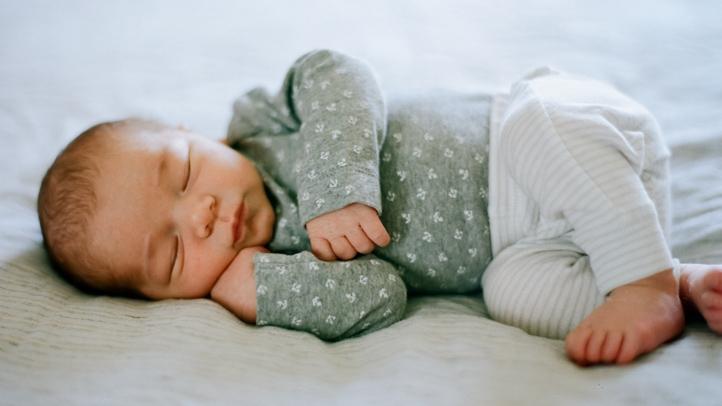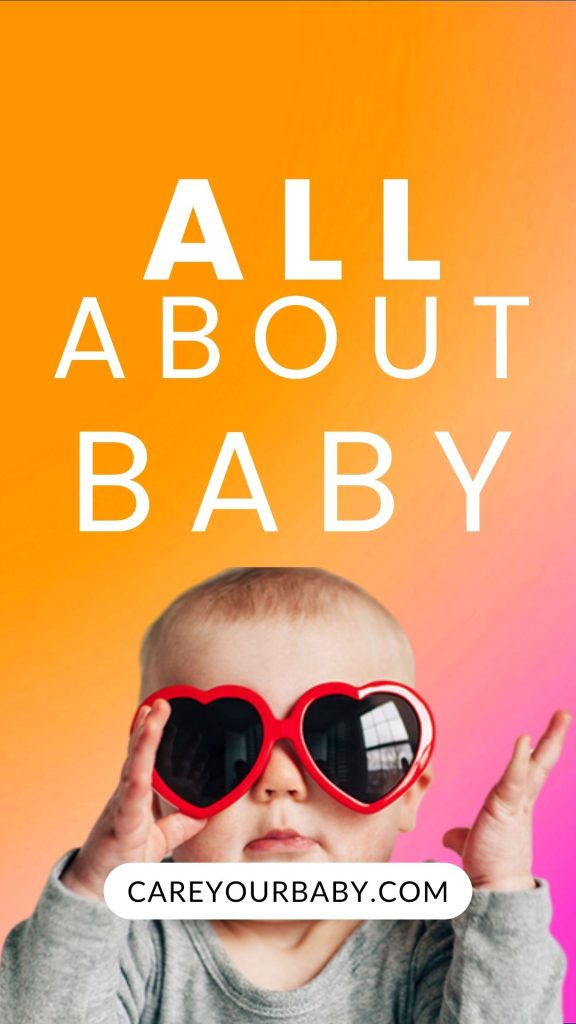As parents, we often find ourselves mesmerized by the delicate and whimsical movements of our newborns. From their tiny fingers grasping at the air to those adorable scrunched-up faces, each gesture evokes a sense of wonder and joy. However, have you ever wondered when the seemingly endless phase of newborn scrunch will come to an end? Understanding the various stages of your baby’s development is crucial, not just for your peace of mind, but also to appreciate the marvel of their growth. In this article, we’ll delve into the fascinating world of baby movements, exploring when that charming scrunched-up disposition begins to transform into more coordinated and expressive gestures. Join us on this journey as we unravel the timeline of development and gain insight into the incredible milestones that lie ahead for your little one.
Understanding Newborn Scrunch: What It Is and Why It Happens
Newborn scrunch refers to the characteristic movement pattern observed in many infants shortly after birth. This behavior is often marked by involuntary tightening of the muscles, resulting in a scrunching or curling of the hands and feet. This phenomenon typically occurs when babies are awake and alert, often accompanied by facial expressions that may seem as if they are reacting to something in their environment. While it may look peculiar, newborn scrunch is a normal part of neurological development. The reflexive nature of these movements indicates that the baby’s nervous system is still maturing and adjusting to life outside the womb.
There are several reasons why newborn scrunch occurs as part of a baby’s early movement repertoire, including:
- Developmental milestones: Babies are constantly reaching physical and neurological milestones that require time to develop.
- Comfort and reflex: These scrunching movements can be a self-soothing mechanism, reminiscent of their fetal position.
- Exploration: Even at a young age, babies engage with their surroundings through movement, which encourages sensory development.
As infants grow and their neurological systems mature, the frequency of scrunching begins to decline, usually tapering off by the end of the first couple of months. Monitoring these movements can provide valuable insight into a baby’s developmental progress and overall well-being, ensuring that parents can celebrate each stage in their little one’s journey.
Milestones in Baby Development: When to Expect Changes in Movement
As parents eagerly observe their newborns, it’s fascinating to note the various stages of movement that mark their development. In the early days, you might notice a reflexive scrunching of the body’s limbs, a natural response to the world around them. This phase often peaks in the first few weeks of life, wherein your baby instinctively curls their body and clenches their fists. By around 2 to 3 months, you can expect a shift as they begin to exhibit more controlled movements and start to open up their hands and stretch out their legs. This is the moment when the newborn scrunch begins to fade away, paving the way for new developmental milestones like rolling over and reaching for objects.
To better understand the progression of movement in your little one, here’s a brief timeline of expected changes:
| Age | Milestone |
|---|---|
| 0-2 Months | Reflexive movements: scrunching and clenching fists |
| 2-3 Months | Starting to open hands and kick legs |
| 4-6 Months | Rolling over and reaching for toys |
| 6-9 Months | Sitting up and crawling movements |
By understanding these transitions, you can celebrate each achievement your baby reaches. Remember that every child develops at their own pace, and variations in these milestones are completely normal.
Signs of Progress: Recognizing the Transition from Scrunching to Freedom
As you observe your newborn’s movements, you may start to notice subtle signs indicating a shift from the tight scrunching posture that seems so inherent to their early weeks. This transition is characterized by a gradual loosening of their limb movements, allowing for greater exploration and interaction with their environment. Your baby may begin to spend more time in a relaxed state, unfolding their arms and legs, which leads to a more open posture. The following signs can help you recognize this exciting phase:
- Increased Arm and Leg Movement: Watch as your baby begins to wave their arms and kick their legs with more enthusiasm, showing curiosity about their surroundings.
- Extended Time on Tummy: Tummy time becomes a favorite activity, offering opportunities to strengthen their neck and back muscles.
- Engaging with Toys: Your little one may start reaching out for toys or grasping objects, exploring textures and colors that capture their attention.
This transformation toward freedom not only enhances your baby’s mobility but also plays a crucial role in their overall development. Motor skills, hand-eye coordination, and cognitive abilities begin to flourish as they experiment with movements that were once restricted. Tracking these changes can be exhilarating for caregivers, especially when you witness how your baby’s abilities are evolving. Key milestones during this period may include:
| Milestone | Age Range |
|---|---|
| Reaching for objects | 4-6 months |
| Rolling over | 4-6 months |
| Grasping toys | 5-7 months |
Supporting Your Babys Movement Journey: Activities and Tips for Parents
As your baby progresses from the scrunched posture of a newborn, they will begin to explore their body and develop essential motor skills. To support this movement journey, encourage plenty of supervised tummy time, which helps strengthen the neck, back, and shoulder muscles. You can enhance tummy time by placing colorful toys just out of reach, providing motivation for your little one to reach, push, and roll. Additionally, consider incorporating simple games such as peek-a-boo and gentle bouncing, which can stimulate their curiosity and promote coordination.
Engaging your child in various activities at home can further aid their development. Here are some ideas to consider:
- Floor Play: Create a safe play area on the floor with soft mats and pillows.
- Motor Skill Toys: Use toys that promote grasping, such as rattles or soft blocks.
- Exploration Time: Allow your baby to explore different textures, like soft blankets, crinkly toys, or even your skin.
By observing your baby’s agility as they transition from scrunched limbs to more fluid movements, you’ll witness the beauty of their growth and development. Over time, these activities will promote the necessary strength and coordination they need to reach the next stages of mobility.
Q&A
Q&A: When Does Newborn Scrunch End? Understanding Baby Movements
Q1: What is the “newborn scrunch”?
A1: Newborn scrunch refers to the characteristic curled-up posture that many babies adopt, resembling a tiny ball. It’s a natural reflex that babies display during their early weeks, often linked to their development in the womb. This scrunched position helps them feel secure, as it mimics their cramped space inside the uterus.
Q2: Why do babies scrunch up like that?
A2: The newborn scrunch serves several purposes. Firstly, it conserves body heat by reducing the surface area exposed to the environment. Secondly, it offers a feeling of security and comfort, as babies are accustomed to being tightly nestled in a warm, snug environment. Lastly, this posture aids in developing muscle strength and coordination over time.
Q3: How long does this scrunched position last?
A3: Typically, the newborn scrunch lasts for the first few months of life, around 2 to 4 months. As babies grow and develop their motor skills, they gradually begin to stretch, kick, and explore their limbs more freely. By around 4 months, most babies start to spend more time in an extended position, enjoying playtime on their tummy or back.
Q4: Are there any signs that indicate my baby is transitioning out of the scrunch?
A4: Yes! As your baby starts to lose that scrunched posture, you may notice them frequently extending their legs, stretching their arms, and spending more time in positions like tummy time or lying on their back with their limbs open. They may also show increased curiosity about their surroundings and an eagerness to engage in play.
Q5: Should I encourage my baby to move more when they start to uncurl?
A5: Encouraging movement is beneficial, but it’s important to let it happen naturally. Providing a safe environment for tummy time, gentle play, and opportunities for exploring different positions can help, but it’s crucial to follow your baby’s lead. Each baby develops at their own pace, so allowing them the freedom to move when they’re ready is key.
Q6: What if my baby continues to scrunch beyond 4 months?
A6: While most babies will begin to stretch and open up by 4 months, some may take a little longer. It’s generally not a cause for concern. However, if you notice any persistent scrunching combined with stiffness, limited movement, or any signs of discomfort, it’s recommended to consult your pediatrician for advice and assessment.
Q7: How can I help my baby’s development as they transition from scrunching?
A7: Supporting your baby’s development involves engaging them in activities that promote movement. Tummy time is essential, as it helps strengthen their neck and shoulder muscles. Interactive play, like encouraging reaching for toys or following movement with their eyes, also aids in their physical and cognitive growth. Remember to celebrate those small milestones along the way!
Q8: Can the scrunching reflex affect my baby’s sleep?
A8: Yes, the scrunching reflex can influence sleep patterns. Many babies find comfort in this position, which may help them feel secure and fall asleep. As they grow and learn to move freely, you may notice shifts in their sleeping positions. Ensure a safe sleep environment, such as laying them on their back on a firm mattress, and allow them the freedom to find their most comfortable sleeping posture.
Q9: Are there any myths surrounding newborn scrunching?
A9: Indeed, several myths exist! One common misconception is that babies who remain scrunched for too long are experiencing developmental delays. In reality, every baby develops at their own rate. As long as they are meeting other milestones and exhibiting healthy growth patterns, scrunching can be a normal part of their early stages.
Q10: What’s the takeaway for parents concerning newborn scrunching?
A10: The newborn scrunch is a natural phase of development that plays a crucial role in your baby’s early life. Embrace this time, providing comfort and safe spaces for exploration. Remember, every baby is unique, so trust your instincts and seek guidance if you have any concerns. Enjoy the journey of watching your little one grow and develop!
In Summary
As we conclude our exploration into the fascinating journey of newborn movements, it’s essential to remember that every baby is unique. The scrunch, with its fleeting charm, marks an exciting stage of development—one that is rich in sensory exploration and neurological growth. While the scrunch may gradually fade as your little one embarks on the adventure of rolling, crawling, and eventually walking, it is merely a prelude to the myriad of movements yet to come. Embrace each phase, cherish those moments of scrunched-up coziness, and trust in the natural progression of your baby’s development. Understanding these changes not only deepens our appreciation of early life but also equips us as caregivers to support our little ones as they discover the world around them. So, keep observing, keep learning, and above all, keep celebrating the small milestones that mark the incredible journey of growth.


